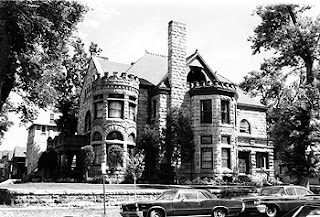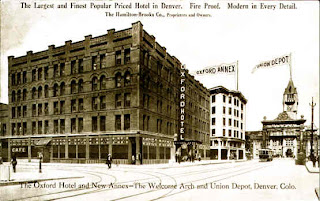HISTORY
The Dunning-Benedict House is located at 1200 Pennsylvania Street. William Lang designed and built this house in 1889 fo

r Walter Dunning. Dunning lived here for quite some time until selling the

house to Mitchell Benedict. In the 1930’s the house was used for many different things, including: hotels, apartments, offices, and rest homes. Today, the house is used for law offices and offers large apartments on the second floor.
On Location
The Dunning-Benedict House is comparable to the Molly Brown House. Located very close together this house shares many characteristics. The house is made from Castle Rock Rhyolite. Some of the floors around the fireplace are made from marble. I came to find out that this certain type of

marble is called, Yule Marble. The majority of houses in D

enver do not have marble as huge walkways, but rather as accents. I could see some weathering that has taken place over that last years; however, the historic district has taken very good care of this house. The windows are somewhat strange seeing that they are of all different shapes and sizes. I did notice however, that a lot of these houses have gold tied into small pieces of art “stuck” to the building. There are many different cracks in and around the house, due to shifting of the land underneath. This house, just like man

y others is beautiful for the eyes.
 o something a little different for my field trip project. I went to historic landmarks around Denver and noted that each has its own geological history! It's amazing to see how geology not only plays a part in our environment, but how it also effects how we live!
o something a little different for my field trip project. I went to historic landmarks around Denver and noted that each has its own geological history! It's amazing to see how geology not only plays a part in our environment, but how it also effects how we live!











 y others is beautiful for the eyes.
y others is beautiful for the eyes.

 in Castle Rock where it has been mined for over 125 years. This stone creates a “jagged” type of appearance. To shade some of the
in Castle Rock where it has been mined for over 125 years. This stone creates a “jagged” type of appearance. To shade some of the 

